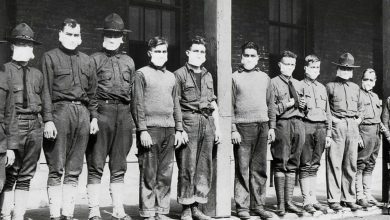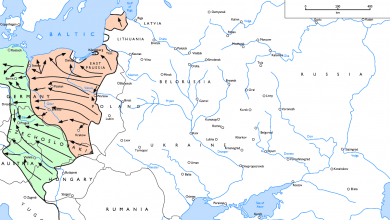The Death of Edward the Confessor and the Norman Invasion

The death of Edward the Confessor on January 5th 1066 sparked a succession crisis which resulted in the Norman conquest of England. This monumental event would reshape the political and cultural landscape of the country. In this article, we will be examining the lead up to this, the conquest itself, and some of its consequences.
Edward the Confessor’s reign
Edward ascended the throne of England in 1042 after the death of Harthacnut, son of Cnut the Great. Norman sources later claimed that he came to the throne with their assistance. However, there is little evidence to support this. Edward allowed Normans into positions of influence in England, such as his nephew, Ralph of Mantes. While he encouraged Norman settlement in England to support him against internal enemies, like Earl Godwine of Wessex, Edward’s court was heavily multinational.
Furthermore, according to Brian Golding, this settlement does not seem to have been under the auspices of Duke William. Edward used this settlement quite openly against the Godwine faction. He even sanctioned the building of castles in earldoms controlled by them.
This provided the ammunition Edward needed to displace the Godwine faction relatively quickly when local garrisons under their control attacked one of his new Norman nobles. The noble in question, Eustace of Boulogne, complained to the King. The Dukes of Mercia and Northumbria encouraged the King to take a softer approach to avoid open conflict. Meanwhile, Godwine fled in 1051, realising that the situation was turning against him only to return in 1052 without further repercussions.
Claims to the Throne
A large part of the Norman justification for their later invasion of England comes from the claim that Edward had pledged William the crown of England on his death. Promises emphasised these claims. It is more likely that Harold Godwinson made these promises to support William’s claim. Whether or not Edward or Harold ever made the promise is uncertain. It relies heavily on the honesty of people who had much to gain from it actually having happened.

The nature of the English monarchy was such that these promises had limited legal impact, even if they were true. The Witenagemot was a council of the higher nobles which primarily advised the King. It decided who would ascend the throne from the late King’s extended family, despite a bias towards respecting primogeniture. This, as Harold pointed out, meant that the throne was not his to give. Ultimately, William’s own illegitimacy and extremely distant blood ties to Edward meant that without the ratification of the supposed promise by the Witenagemot, William’s casus belli was just that; window dressing to justify his ambitious conquest plans.
The Norman Conquest
William was not the only serious contender to Harold’s accession to the throne. Harald Hardrada of Norway launched his own invasion. William was encouraged in his plans of invasion by Harald’s own brother Tostig. The people of Northumbria had deposed Tostig due to his abusive rule. So abusive, in fact, that both King Edward and Harold refused to restore his position. Tostig ended up dying supporting yet another enemy of his brother Harald Hardrada of Norway.
Hardrada invaded first. Meanwhile, bad weather prevented the Normans from even leaving Normandy. This turned out to be fortunate for William. Hardrada initially succeeded in taking York, but King Harold’s forces defeated and killed him at the Battle of Stamford Bridge. This achievement was a significant one. Harold had reassembled his army and marched north so quickly that Hardrada initially did not think the approaching army could be his. However, the fighting exhausted Harold’s army. They then had to rapidly march south as William had landed in Sussex while Harold had repelled the Norwegian invasion.
The Battle of Hastings
The Battle of Hastings itself was not an easy victory for William, despite his advantages. Harold had managed to arrange his forces in a formidable shield wall upon a hill. He had also given orders that his forces should categorically not leave their formation or the hill. William ordered his forces to attack regardless. Through archers, infantry and cavalry charges, the English formation held. At this fateful point, William’s forces either began to retreat or feigned doing so.

The fyrd were England’s non-professional levies, as opposed to the professional housecarls. Under Harold’s brother’s command, they decided to charge after the fleeing Normans. Planned or not, the Normans recognised this as an opportunity. They rallied and crushed the disorganised and surprised English forces on flat terrain, suited to the Norman reliance on heavy cavalry charges. Harold was killed during the battle. Some resistance continued, such as in South West England, where some of Harold’s sons tried to fight on. Despite this, William relatively easily claimed the crown following the Battle of Hastings.
The aftermath
The Norman conquest radically reshaped England. The application of the feudal system and the establishment of Normans as the new aristocracy are two obvious examples. These nobles brought a French administration with them. Meanwhile, English became the language of peasants for centuries. Gradually, the administration of England began to use English again.
However, this was only out of necessity, after the black death killed so many of the people needed to administer the country. Politically, the conquest pulled England towards the continent. The Francophone kings frequently concentrated on their holdings in France, either preserving or increasing them. This ultimately led to the 100 Years War.
William’s reign was also extremely harsh. English resistance in the North of England led to the brutal Harrying of the North in 1069-1070. This killed huge numbers of people and caused a deadly famine. According to the chronicler Orderic Vitalis, the famine killed upwards of 100,000 people.





